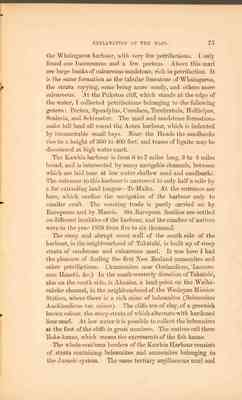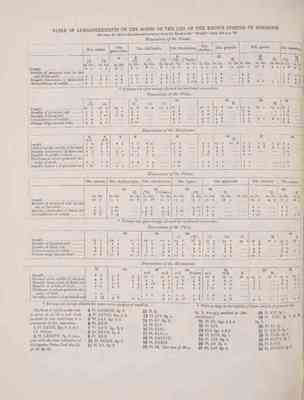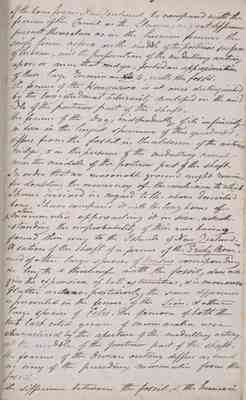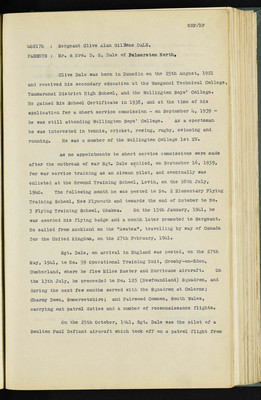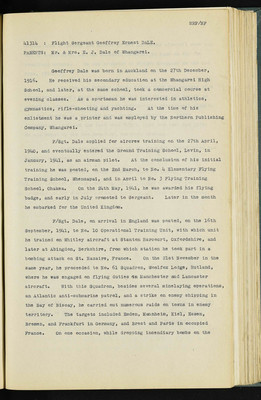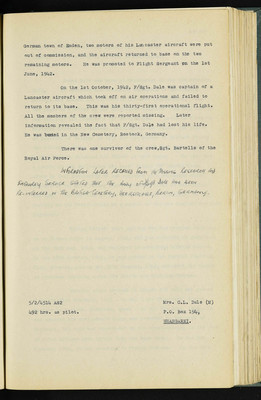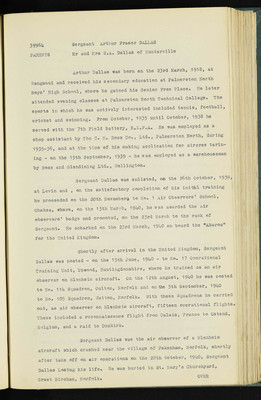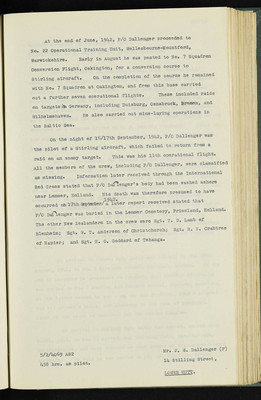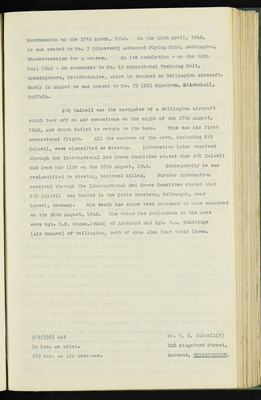Pages That Need Review
The geology of New Zealand in explanation of the geographical and topographical atlas of New Zealand : also, lectures by Dr F. Hochstetter delivered in New Zealand
EXPLANATION OF THE MAPS. 75
The Whaingaroa harbour, with very few petrifactions. I only found one Inoceranus and a few peetens. Above this marl are large banks of calcarous sandstone, rich in petrifaction. It is the same formation as the tabular limestone of Whaingaroa, the strata varying, some being more sandy, and others more calcareous. 'At the Puketoa cliff, which stands at the edge of the water, I collected petrifactions belonging to the following genera: Peteen, Spondylus, Cuculaen, Terebratula, Hollieipes, Sealaria, and Schizaster. The marl and sandstone formations make hill land all round the Aotea harbour, which is indented by innumerable small bays. Near the Heads the sandbanks rise to a height of 300 to 400 feet, and traces of lignite may be discovered at high water mark.
The kawhia harbour is from 6 to 7 miles long, 3 to 4 miles broad, and is intersected by many navigable channels, between which are laid bare at low water shallow mud and sandbanks. The entrance to this harbour is narrowed to only half a mile by a far extending tongue--Te Maika. At the entrance are bars, which confine the navigation of the harbour only to smaller craft. The coasting trade is partly carried on by Europeans and by Maoris. Six European families are settled on different localities of the harbour, and the number of natives were in the year 1859 from five to six thousand
The steep and abrupt coast wall of the south side of the harbour, in the neighbourhood of Takatahi, is build up of steep strata of sandstone and calcareous marl. It was here I had the pleasure of finding the first New Zealand ammonites and other petrifactions. (Ammonites now Ocelandicous, inoceramus Haastii, &e.) In the south-westerly direction of Takatahi, also on the south side, is Ahnahu, a land-point on the Waiharakeke channel, in the neighbourgood of the Wesleyan Mission Station, where there is a rich mine of belemnites (Belemnites Aucklandicus var. minor). The cliffs are of clay, of a greenish brown colour, the steep strata of which alternate with hardened lime marl. At low water it is possible to collect the belemnites at the foot of the cliffs in great numbers. The natives call them Roke-kanae, which means the excrements of the fish kanae.
The whole southern borders of the Kawhia Harbour consists of the strata containing belemnites and amnonites belonging to the Jurasic system. The same tertiary argillaeous marl and
Memoirs on the extinct wingless birds of New Zealand : with an appendix on those of England, Australia, Newfoundland, Mauritius, and Rodriguez
386
TABLE OF ADMEASUREMENTS OF THE BONES OF THE LEG OF THE KNOWN SPECIES OF DINORNIS. The letter H. refers to the admeasurements given by Dr. Haast in the "Memoir" cited, note 2, p. 362.
|Dimensions of the Femur.
| ... | Din. | Din. | Din. | Din. | Din. | Din. | Din. | Din. | |
|---|---|---|---|---|---|---|---|---|---|
| ... | curtus. | ... | didiformis. | dromioides. | rheides. | gracilis. | gravis. | casuarinus. | |
| 4 | 6 | 9 | 13 | 15 | 18 | ||||
| f3 f4 | f8. f7. f17. | f16. fTaylor. | H. | H. H. | f 13 fE. | ||||
| in.lin. in.lin. | in. lin | in. lin. | in.lin. in.lin. in.lin. | in. lin. in. lin. | in. lin. | in.lin. in. lin. | in.lin. in.lin. in.lin. | in.lin. in.lin. | |
| Length | 6 0 5 6 | 6 3 | 8 0 8 0 8 1 | 9 6 9 7 | 9 0 | 11 6 11 4 | 11 0 10 8 9 3 | 9 6* 10 4 |
Breadth of Proximal end (in the axis of the neck).... 2 3 2 0 2 3 2 10 3 0 3 3 3 6 3 6 3 0 3 8 ......... 4 3 ....... ....... 3 5* 3 11 Breadth(traverse)distal end 2 5 2 2 2 9 3 3 3 2 3 6 3 7 3 8 3 6 4 0 ......... 4 7 ........ ....... 3 9 4 4 Circumference of middle... 2 9 2 7 3 2 4 0 4 0 4 3 4 0 3 10 1/2 3 9 4 8 ......... 5 8 6 0 5 3 5 0 4 9
*perhaps not quite enough allowed for mutilated extremities.
Dimensions of the Tibia. 1 7 10 14 18 19 t3. t4. t3. t8. t9. II. H. Length Breadth of proximal end Breadth of distal end Circumference of middle Fibular ridge extends down
Dimensions of the Metatarsus.
length Circumf. at middle of shaft Breadth (transverse) distal end Breadth of middle of shaft thickness or antero-posterior diameter of shaft Breadth(transv.)proximal end
Dimensions of the Femur.
563
If the bone from New Zealand be compared with the femur of the Camel or the Llama, as great differences present themselves as in the human femur : the single linea aspera on the middle of the posterior surface of the bone, and the perforation of the medullary artery, upon or near that ridge, forbid an approximation of then lay [illegible] to, with the fossil.
The femur of the Kangaroo is at once distinguished by the longitudinal tuberosity developed on the middle of the posterior part of the shaft.
The femur of the Dog, independently of its inferiority in size in the largest specimens of this quadruped, differs from the fossil in the absence of the anterior ridge, & in the presence of the medullary canal near the middle of the posterior part of the shaft. In order that no reasonable ground might remain for doubting the accuracy of the conclusion to which I have arrived in regard to the above described bone. I have compared it with the long bones of ^other^ mammalia approaching it in size, notwithstanding the improbability of their ever having found their way to the Islands of New Zealand. A section of the shaft of a femur of the "Grizly Bear", and of other large species of Ursus corresponding in length & thickness with the fossil, does not give the expansion of both extremities, & is moreover flatter [illegible] posteriorly, the same difference is presented in the femur of the Lion & other large species of Felis. The femora of both the two last cited genera of mammalia are characterized by the aperture of the medullary artery at the middle of the posterior part of the shaft. The femur of the Ouran outang differ as much as any of the preceding mammalia from the fossil.
The difference between the fossil & the humeri
RNZAF Biographies of Deceased Personnel: 1939 - 1945, Ab - Bl
550
SB/NF
421496 : Pilot Officer Ian Edward BLANCE. PARENTS : Mr. & Mrs. J. W. Blance of New Plymouth.
Ian Blance was born at New Plymouth on the 7th January, 1923 and educated at New Plymouth Boys' High School and New Plymouth Technical College. He played the usual sports and was particularly interested in golf.
Prior to enlisting in the RNZAF on the 27th February, 1942, he was employed as a projectionist in the Mayfair Theatre, New Plymouth.
His flying training was carried out at No. 1 Elementary Flying Training School, Taieri and No. 1 Service Flying Training School, Wigram. He was awarded the flying badge at the latter unit on the 12th April, 1943 and promoted to Sergeant on 5th June, 1943.
Ian Blance embarked for the United Kingdom in June, commencing advanced flying training at No. 14 Advanced Flying Unit, Fraserburgh, Aberdeenshire on the 31st August, flying Oxford aircraft. He was promoted to Flight Sergeant on 5th December, 1943. In January, 1944 he proceeded to No. 11 Operationsl Training Unit, Oakley, Buckinghamshire, where he carried out operational exercises in Vickers Wellington type aircraft. He converted to Short Stirling bombers at No. 1651 Conversion Unit, Waterbeach, Cambridgeshire in early June and the same month flew Lanacaster bombers at No. 3 Lancaster Finishing School, Feltwell, Norfolk preparatory to joininf the famous No. 75 (NZ) Squadron on 10th July, 1944. He was granted his commission on the 20th April, 1944. Based at Mepal, Cambridgeshire, P/O Blance participated in operations over Vaires San Marne, near Paris, and Allnoye in France.
P/O Blance was the pilot of a Lancaster bomber engaged on operations over Stuttgart, Germany. The aircraft was shot down, but P/O Blance was able to pull the blazing aircraft out of the dive long enough to enable three members of the crew to bale out before crashing to his death. He was buried in the local cemetery at Pompey near Metz & Nancy, France.
5/2/11691 A. S. 2. 471 hrs. as pilot.
Mr. S. W. Blance (F) 89 Molesworth St., New Plymouth
RNZAF Biographies of Deceased Personnel: 1939 - 1945, Co - Dy
317
MRP/NF
402170 : Sergeant Clive Alan Gillons DALE. PARENTS. : Mr. & Mrs. D. S. Dale of Palmerston North.
Clive Dale was born in Dunedin on the 25th August, 1921 and received his secondary education at the Wanganui Technical College, Taumarunui District High School, and the Wellington Boys' College. He gained his School Certificate in 1938, and at the time of his application for a short service commission - on September 4, 1939 - he was still attending Wellington Boys' College. As a sportsman he was interested in tennis, cricket, rowing, rugby, swimming and running. He was a member of the Wellington College 1st XV.
As no appointments to short service commissions were made after the outbreak of war Sgt. Dale applied, on September 16, 1939, for war service training as an airman pilot, and eventually was enlisted at the Ground Training School, Levin, on the 28th July, 1940. The following month he was posted to No. 2 Elementary Flying Training School, New Plymouth and towards the end of October to No. 3 Flying Training School, Ohakea. On the 15th January, 1941, he was awarded his flying badge and a month later promoted to Sergeant. He sailed from Auckland on the "Awatea", travelling by way of Canada for the United Kingdom, on the 27th February, 1941.
Sgt. Dale, on arrival in England was posted, on the 27th May, 1941, to No. 59 Operational Training Unit, Crosby-on-Eden, Cumberland, where he flew Miles Master and Hurricane aircraft. On the 13th July, he proceeded to No. 125 (Newfoundland) Squadron, and during the next few months served with the Squadron at Colerne; Charmy Down, Somersetshire; and Fairwood Common, South Wales, carrying out patrol duties and a number of reconnaissance flights.
On the 25th October, 1941, Sgt. Dale was the pilot of a Boulton Paul Defiant aircraft which took off on a patrol flight from
319
MRP/NF
41314: Flight Sergeant Geoffery Ernest Dale. PARENTS: Mr. & Mrs. E. J. Dale of Whangarei.
Geoffery Dale was born in Auckland on the 27th December, 1916. He received his secondary education at the Whangarei High School, and later, at the same school, took a commercial course at evening classes. As a sportsman he was interested in athletics, gymnastics, rifle-shooting and yachting. At the time of his enlistment he was a printer and was employed by the Northern Publishing Company, Whangarei.
F/Sgt. Dale applied for aircrew training on the 27th April, 1940, and eventually entered the Ground Training School, Levin, in January, 1941, as an airman pilot. At the conclusion of his initial training he was posted, on the 2nd March, to No. 4 Elementary Flying Training School, Whenuapai, and in April to No. 3 Flying Training School, Ohakea. On the 24th May, 1941, he was awarded his flying badge, and early in July promoted to Sergeant. Later in the month he embarked for the United Kingdom.
F/Sgt. Dale on arrival in England was posted, on the 16th September, 1941, to No. 10 Operational Training Unit, with which unit he trained on Whitley aircraft at Stanton Harcourt, Oxfordshire, and later at Abingdon, Berkshire, from which station he took part in a bombing attack on St. Nazaire, France. On the 21st November in the same year, he proceeded to No. 61 Squadron, Woolfox Lodge, Rutland, where he was engaged on flying duties on Manchester and Lancaster aircraft. With this Squadron, besides several minelaying operations, an Atlantic anti-submarine patrol, and a strike on enemy shipping in the Bay of Biscay, he carried out numerous raids on towns in enemy territory. The targets included Emden, Mannheim, Kiel, Essen, Bremen, and Frankfurt in Germany, and Brest and Paris in occupied France. On one occasion, while dropping incendiary bombs on the
320
German town of Emden, two motors of his Lancaster aircraft were put out of commission, and the aircraft returned to base on the two remaining motors. He was promoted to Flight Sergeant on the 1st June, 1942.
On the 1st October, 1942, F/Sgt. Dale was captain of a Lancaster aircraft which took of on air operations and failed to return to its base. This was his thirty-first operational flight. All the members of the crew were reported missing. Later information revealed the fact that F/Sgt. Dale had lost his life. He was buried in the New Cemetery, Rostock, Germany.
There was one survivor of the crew, Sgt. Bartells of the Royal Air Force.
INFORMATION LATER RECIEVED FROM THE MISSING RESEARCH AND ENQUIREY SERVICE STATED THAT THE BODY OF SGT DALE HAD BEEN RE-INTERRED IN THE BRITISH CEMETERY, HEERSTRASSE, BERLIN, GERMANY.
5/2/4514 AS2 492 hrs. as pilot.
Mrs. C.L. Dale (M) P.O. Box 194, WHANGAREI.
331
39964 Sergeant Arthur Fraser DALLAS PARENTS Mr and Mrs W.A. Dallas of Hunterville
Arthur Dallas was born on the 23rd March, 1918, at Wanganui and received his secondary education at Palmerston North Boys' High School, where he gained his Senior Free Place. He later attended evening classes at Palmerston North Technical College. The sports in which he was actively intrested included tennis, football, cricket, and swimming. From October, 1935 until October, 1938 he served with the 7th Field Battery, N.Z.F.A. He was employed as a shop assistant by The C. M. Ross Co., Ltd., Palmerston North, during 1935-36, and at the time of his making application for aircrew tarin-ing - on the 15th September, 1939 - he was emplyed as a warehouseman by Ross and Glendining Ltd., Wellington.
Sergeant Dallas was enlisted, on the 26th October, 1939, at Levin and, on the satisfactory completion of his inital training he proceeded on the 20th November to No. 1 Air Observers' School, Chakes, where, on the 13th March, 1940, he was awarded the air observers' badge and promoted, on the 23rd March to the rank of Sergeant. He embarked on the 23rd March, 1940 on board the "Akaros" for the United Kingdom.
Shortly after arrival in the United Kingdom, Sergeant Dallas was posted - on the 15th June, 1940 - to No. 17 Operational Training Unit, Upwood, Huntingdonshire, where he trained as an air observer on Blenheim aircraft. On the 12th August, 1940 he was posted to No. 114 Squadron, Oulton, Norfolk and on the 5th September, 1940 to No. 105 Squadron, Watton, Norfolk. With these Squadrons he carried out, as air observer on Blenheim aircraft, fifteen operational flights. These included a reconnaissance flight from Calais, France to Ostend, Belgium, and a raid to Dunkirk.
Sergeant Dallas was the air observer of a Blenheim aircraft which crashed near the village of Fakenham, Norfolk, shortly after take off on air operations on the 28th October, 1940, Sergeant Dallas losing his life. He was buried in St. Mary's Churchyard, Graet Bircham, Norfolk.
OVER
333
At the end of June, 1942, P/O Dallenger proceeded to No. 22 Operational Training Unit, Wellesbourne-Mountford, Warwickshire. Early in August he was posted to No. 7 Squadron Conversion Flight, Oakington, for a conversion course to Stirling aircraft. On the completion of the course he remained with No. 7 Squadron at Oakington, and from this base carried out a further seven operational flights. These included raids on targets in Germany, including Duisburg, Osnabruck, Bremen, and Wilhelmshaven. He also carried out mine-laying operations in the Baltic Sea.
On the night of 16/17th September, 1942, P/O Dallenger was the pilot of a Stirling aircraft, which failed to return from a raid on an enemy target. This was his 11th operational flight. All the members of the crew, including P/O Dallenger, were classified as missing. Information later received through the International Red Cross stated that P/O Dallenger's body had been washed ashore near Lemmer, Holland. His death was therefore presumed to have occured on 17th September, 1942. A later report received stated that P/O Dallenger was buried in the Lemmer Cemetery, Friesland, Holland. The other New Zealanders in the crew were Sgt. T. D. Lamb of Blenheim; Sgt. W. T. Anderson of Christchurch; Sgt. R. B. Crabtree of Napier; and Sgt. H. O. Goddard of Tehanga.
5/2/4069 AS2 458 hrs. as pilot.
Mr. J. S. Dallenger (F) 14 Stilling Street, LOWER HUTT.
337
Bournemouth on the 27th March, 1942. On the 14th April, 1942, he was posted to No. 3 (Observer) Advanced Flying Unit, Bobbington, Worcestershire for a course. On its completion - on the 12th May, 1942 - he proceeded to No. 11 Operational Training Unit, Bassingbourn, Hertfordshire, where he trained on Wellington aircraft. Early in August he was posted to No. 75 (NZ) Squadron, Mildenhall, Suffolk.
P/O Dalzell was the navigator of a Wellington aircraft which took off on air operations on the night of the 27th August, 1942, and which failed to return to its base. This was his first operational flight. All the members of the crew, including P/O Dalzell, were classified as missing. Information later received through the International Red Cross Committee stated that P/O Dalzell had lost his life on the 28th August, 1942. Subsequently he was reclassified to missing, believed killed. Further information recieved through the International Red Cross Committee stated that P/O Dalzell was buried in the Korle Cemetery, Melsungen, near Kassel, Germany. His death has since been presumed to have occured on the 28th August, 1942. The other New Zealanders in the crew were Sgt. D.P. Hogan (WOAG) of Auckland and Sgt. V.A. Tunbridge (Air Gunner) of Wellington, both of whom lost their lives.
5/2/5363 AS2 14 hrs. as pilot. 265 hrs. as Air Observer.
Mr. T. H. Dalzell(F) 108 Kingsford Street, Burwood, CHRISTCHURCH.
